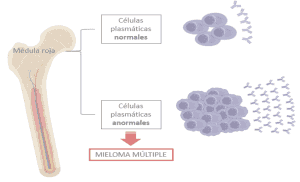#ZIKA TRENDING TOPIC
The Zika virus is a “trendy” one since the World Health Organization (WHO) declared a global public health emergency by linking the virus to neurological disorders in newborns. But what are we facing? In this post I will try to answer the most common questions about this new epidemic.
First, where does this virus come from? Zika means “overgrown” in Luganda language and it was first isolated in 1947 in the rainforest of Uganda. It belongs to the same family of viruses as dengue, yellow fever or Japanese encephalitis and it has been the greatest unknown until its first outbreaks in the Pacific and French Polynesia in 2007 and 2013. The 2014 World Cup probably introduced it to Latin America and from there it has spread steadily across the continent, with most cases in Brazil and Colombia.
Is it only transmitted by mosquitoes liked dengue virus? Its main mode of transmission is through the bite of an infected Aedes mosquito (primarily by A.aegypti but also by its famous brother A.albopictus, the tiger mosquito that is colonizing all the Mediterranean countries). The virus has been detected in urine, saliva, blood, breast milk and semen; and it has the potential to be transmitted by contact with all these fluids. On March 4, WHO reported endemic virus infection in France, Italy and the US without the presence of the mosquito, reinforcing the idea of sexual transmission.
What happens if we get infected? Infection by zika is normally mild and 75% of those infected do not even have symptoms. Others can present mild fever, rash, fatigue, muscle pain and sometimes conjunctivitis, eyeball inflammation or sensitivity to light. These symptoms do often resolve in a couple of weeks without further complications.
However, in a recent study of the French Polynesian outbreak, the virus has been associated to an increase of the Guillain-Barré syndrome; a neurological disorder that affects nerves. It causes muscle weakness, paralysis, respiratory distress and death in 4% of the cases. But the alarm went off when the infection in pregnant women was related with an increased microcephaly rate (up to 20 times) in their infants. Microcephaly, or a smaller size of the head, often associates with severe cognitive defects of the babies and can produce a premature death. On April 13, the Control Disease Center (CDC), after careful review of existing evidence (like the presence of antibodies against the virus and the detection of viral nucleic acids in microcephalic foetuses, or even the premature death of infected neural stem cells), concluded that zika virus could cause microcephaly and other birth defects.
How do we protect ourselves? Is there a drug or a vaccine? Now in the middle of a mosquito population explosion due to the “El Niño” effect, we haven’t developed any kind of antiviral drug or vaccine yet. Besides the personal protection against the bite, we can try to decrease the insect population by releasing genetically modified mosquitoes whose offspring is sterile or placing “the eating mosquito larvae” fish (Gambusia affinis) in ponds or standing water.
Furthermore, health authorities of affected countries recommend to postpone pregnancies between six months and two years during the course of the outbreak; and even Pope Francis contemplates the possibility of the use of contraceptive methods. Nevertheless, we shouldn’t forget the little access to sex education, contraception and therapeutic abortion for most women living in the affected areas.
Can Zika virus become pandemic? Recent chikungunya virus infections, transmitted by the same vector, only led to self-contained outbreaks in temperate zones like Europe compared to what happened in the Tropics at the same time. Nevertheless, we should pay attention but without fear to what can happen after the Olympic Games in Rio de Janeiro this summer.
by Nerea Irigoyen (@NereaIrigoyen). Postdoctoral researcher at the Division of Virology in the University of Cambridge.






